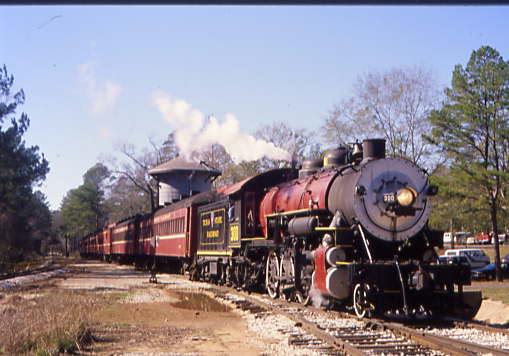
Chris Parker and I arose at the Best Western Inn on the Hill in Athens, Texas.
After a better breakfast at this hotel, we checked out and drove south down Texas 19 to Palestine on my 49th birthday and Day 4,365 of my sobriety.
Missouri Pacific, formerly Interntaional and Great Northern Railway station from Neches, built in 1906. It served a long and useful life as the point of departure and arrival for thousands of East Texans, brought their supplies, necessities and luxuries to them and finally wound up in a farmer's field as a hay barn. A group of Palestine residents, called the Diamond Stack Preservation Society, with an interest in local history and particularly in railroading, bought the dilapidated old building, and while pondering its ultimate fate moved it to the Anderson County fairgrounds. There it languished for many months, becoming a haven for several swarms of bees.
Finally, in 1980, through the cooperation of the Texas Highway Department, county and local law officials, the depot began its precarious move from the fairgrounds to its present (and hopefully last) site in Palestine. During the move, people lined the streets to observe this ancient structure ponderously negotiating corners and hills; offering advice, and even forming "the depot watcher's society". It was restored and is now the Chamber of Commerce.
A Texas Historical Marker about the station.
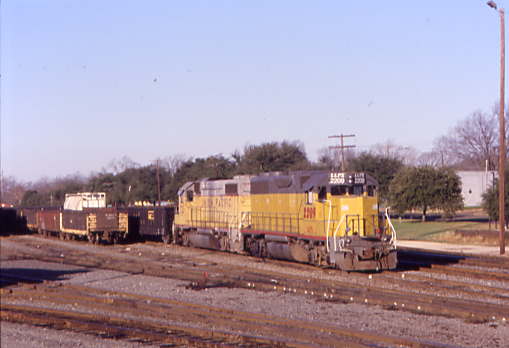
Locomotive Leasing Partners GP38-2 2289, ex. Union Pacific 438, nee Union Pacific 2440 built by Electro-Motive Division in 1979.
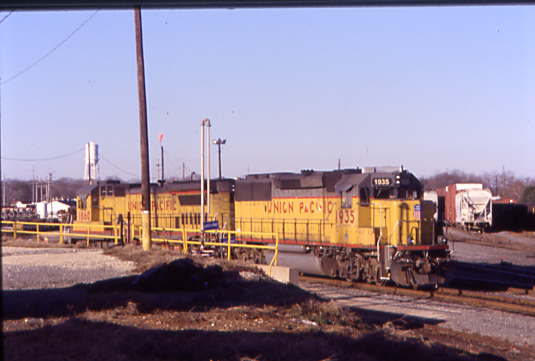
Union Pacific GP38 1935, ex. Union Pacific 435 2001, nee EMD 790 built by Electro-Motive Division in 1972 and Union Pacific B40-8 1860 2004, ex. Union Pacific 5669 1999, nee St. Louis-Southwestern 8062 built by General Electric in 1988.
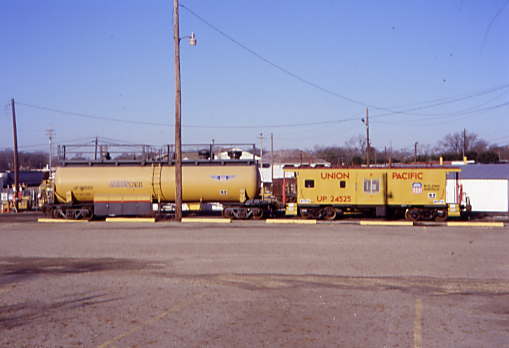
A fuel car and Union Pacific caboose 24525, nee Chicago, Rock Island and Pacific 17107 built by International Car Company in 1967 and retired in 1992, at the Palestine Car Shops.
On the way out of town was Missouri Pacific caboose 13148 built by the railroad in 1948, numbered as 12148. We then drove US 84 east three miles where we found the entrance to our next train ride.
Chris Parker and I found the Texas State Railroad sign at Park Road 70 and US Highway 84, with an exhibit letting one know this is the correct place to ride a Texas State Railroad train then turned right. We heard a steam whistle calling to us, so we drove into the park and found the station. The Texas State Railroad is part of the Texas State Park system.
Texas State Railroad HistoryThe Texas State Railroad, also referred to as the Lone Star and Eastern Railroad, is a historic 25 mile heritage railroad between Rusk and Palestine. Built by inmates as a narrow gauge railroad, it was founded in 1883 by the state of Texas to haul raw materials for a smelter at the prison at Rusk. In 1906, the line reached Maydelle and by 1909, the line was completed when it reached Palestine. The railroad grew and eventually expanded to freight and passenger service, but it was not profitable. Regular train service by the state ceased in 1921.
The line was then leased to the Texas & New Orleans Railroad until 1962 and then to the Texas South-Eastern until 1969. After failure of the shortlived Cherokee & Southwestern Tourist Railroad to establish a tourist operation under a new lease, in 1972, the line was turned over to the Texas Parks and Wildlife Department to be used as a state park. Prison inmates once again worked to help clear brush along the right-of-way.
In 1972, the Texas Legislature turned the railroad over to the Texas Parks and Wildlife Department to be used as a state park. However, by 2006, the train cost the state of Texas $1 million per year more to maintain and to operate than the revenue from the park generated. Because of budget concerns, the Eightieth Texas Legislature (2007) passed Senate Bill 1659 which allowed for the creation of the Texas State Railroad Authority, and conveyed ownership of real estate and rolling stock to the Authority. The right-of-way was leased to the Authority for 99 years and the Authority leases operation of the line to qualified railroad operators.
Around the Palestine Station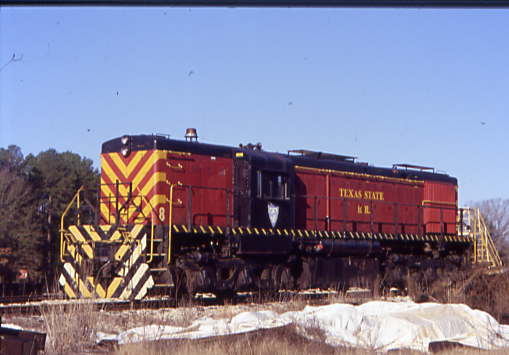
After parking, I walked over to the shop area for Texas State Railroad MRS-1 8, nee United States Army 2101 built by American Locomotive Company in 1953.
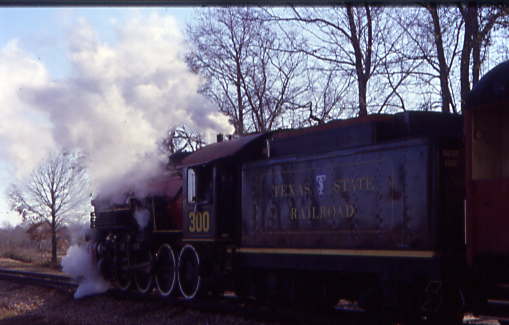
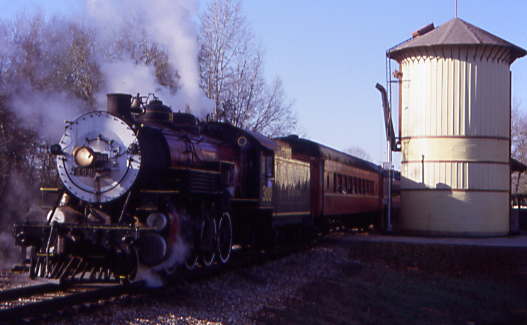
Next we walked over to where Texas State Railroad 2-8-0 300, ex. Southern Pine Lumber 28 1956, exx. Temple Lumber Company 28 1955, exxx. Tremont and Gulf Railway 28, exxxx. S. Bender 1947, exxxxx. United States Amry 20 1941, exxxxxx. United States Army 645 1919, nee United States Army 396, built by Baldwin Locomotive Works in 1917, was steaming away on the point of our train.
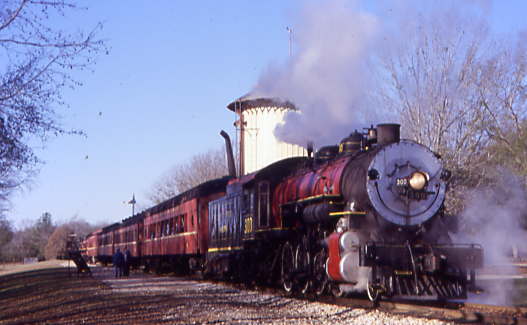
The beautiful train in front of the Palestine Station.
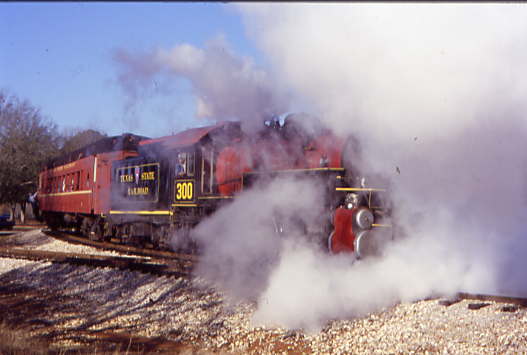
First, the locomotive took a car from the front of the train to the shop area.

The steam engine returning to the train.
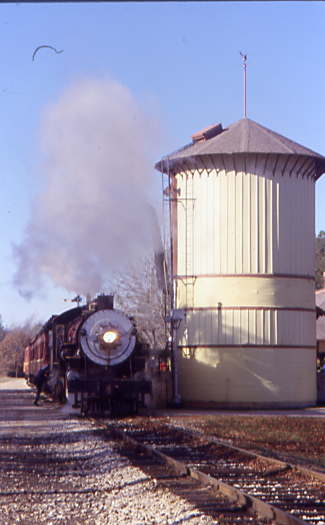
Here Texas State Railroad 300 passed my photo location.
Next to the water tower was a wig-wag crossing signal.
The beautiful Palestine station, a replica representing the Victorian era of architecture that was popularized when steam locomotives first criss-crossed the American landscape over a century ago.
One leg of the wye.
Texas State Railroad MRS-1 8.
Texas State Historical Marker in front of the station, after which I went inside and picked up our tickets.
The rear of our train.
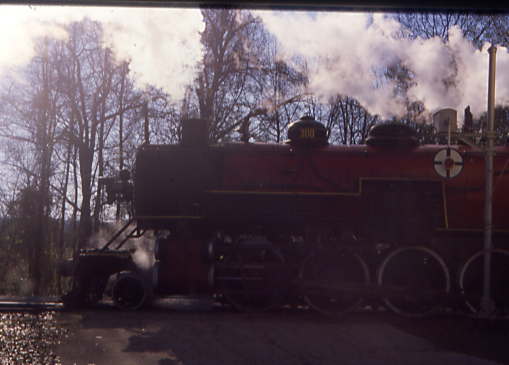
The wig wag and Texas State Railroad 2-8-0 300.
Before I boarded, I talked to the conductor about being able to take pictures and she suggested the back door of the rear closed-off car. We boarded and took our seats in coach 43, but had to wait for a car attendant to take us to the rear door. This train had a consist of Texas State Railroad 2-8-0 300, coach 45, coach 42, combine 61, coach 43, coach 44 and coach 46.
Passengers in coach 43, nee Chicago, Rock Island and Pacific commuter coach built by Standard Steel, year unknown.
Chris Parker in coach 43 before the trip started. Just before departing, our host, H.L. Langston, took us through the two closed cars to the rear door.
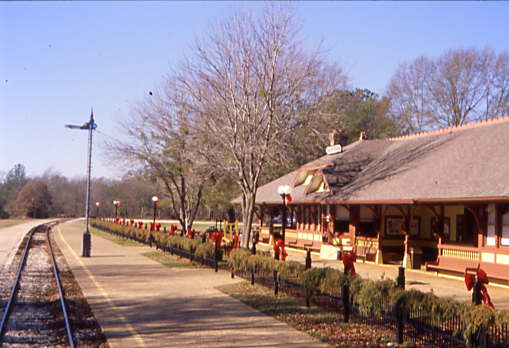
The train departing Palestine station.
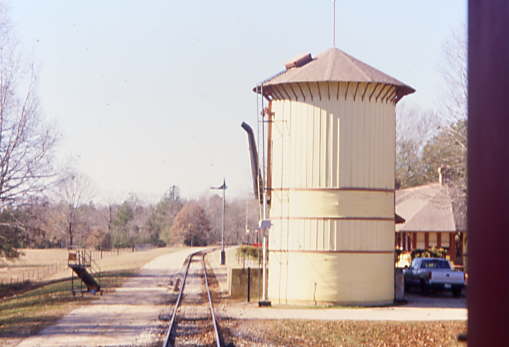
Leaving the water tower behind as Palestine faded into the distance.
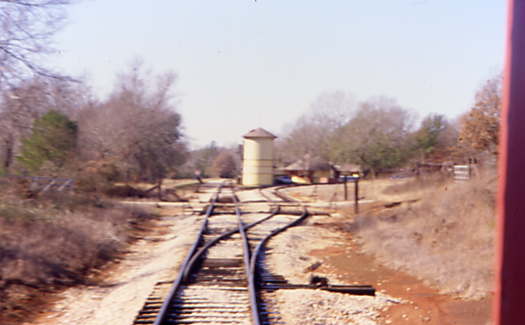
The last switch to the shops and we were leaving Palestine for good on the eastbound trip.
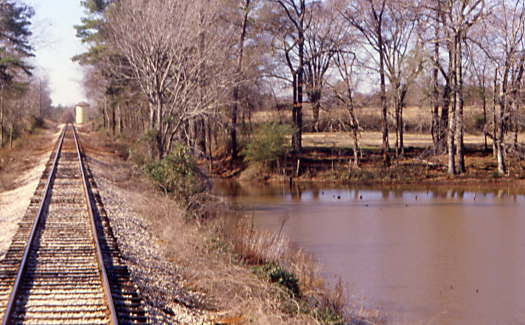
A pond along the route as we made our way towards Rusk.
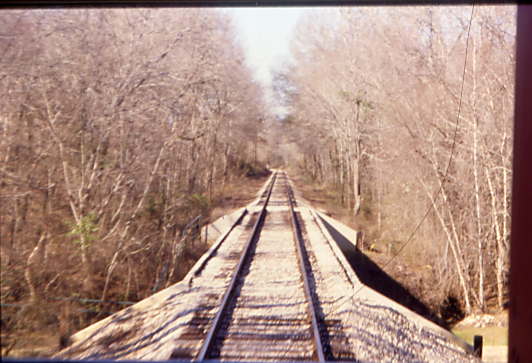
Crossing the first of several small bridges on the line.
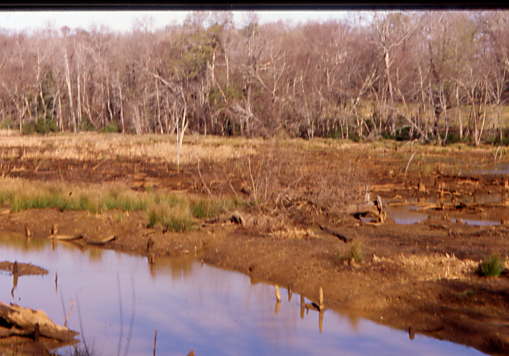
Another small pond with a beaver dam.
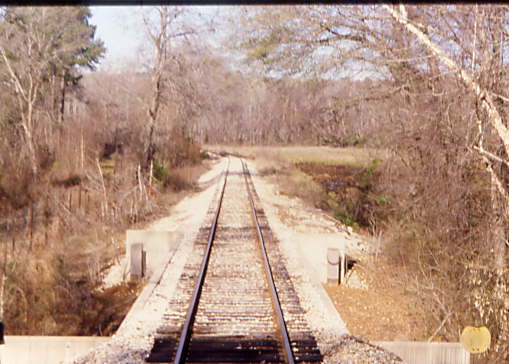
Traversing another small bridge.
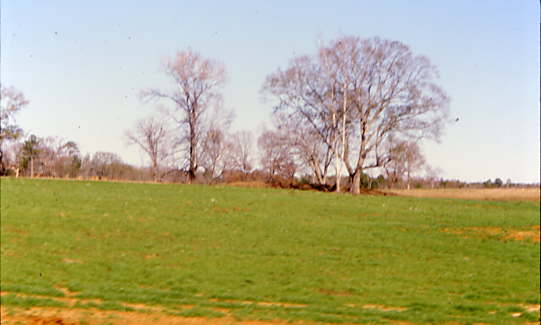
Hills that had been cleared for grazing.
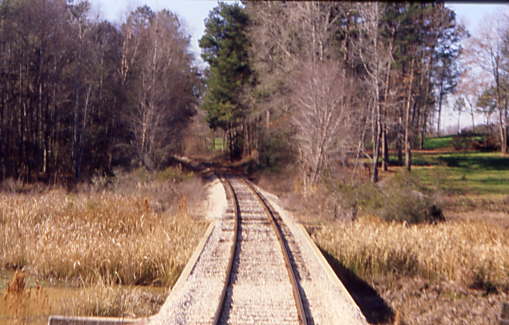
Crossing Stills Creek bridge.
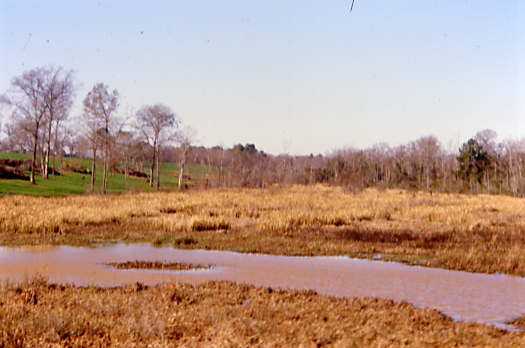
Stills Creek.
H.L. Langston Jr. was our official guide in the coach 46.
The interior coach 46, nee Chicago, Rock Island and Pacific commuter coach built by Standard Steel, year unknown.
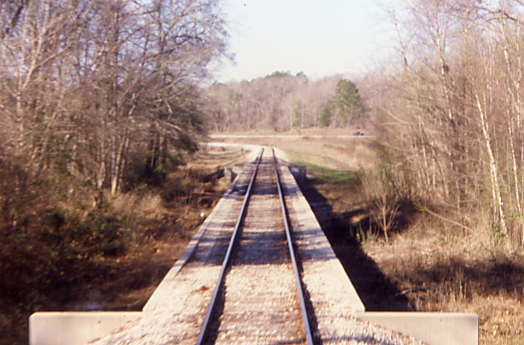
We crossed another short bridge and continued through the forest.
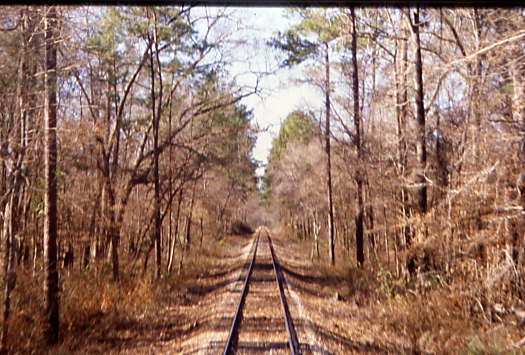
A forest without leaves allows one to see items that are not normally seen.
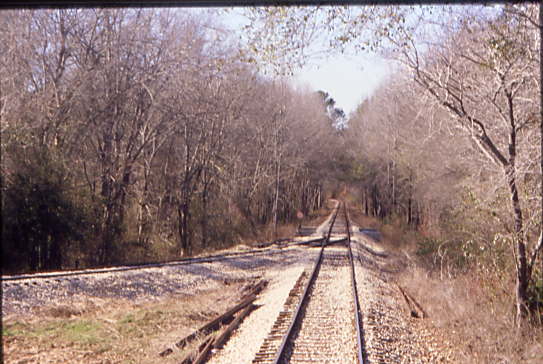
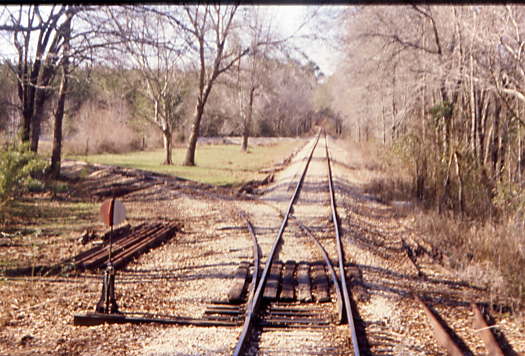
The Jarvis wye which is used for turning the steam engines.
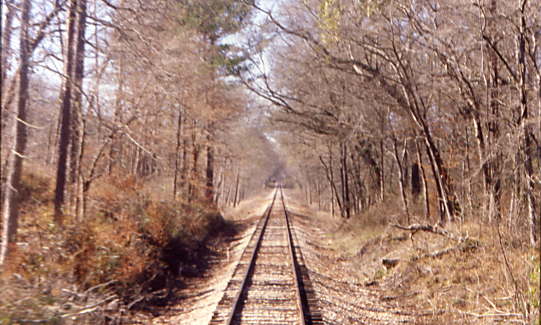
There is plenty of straight track on the railroad.
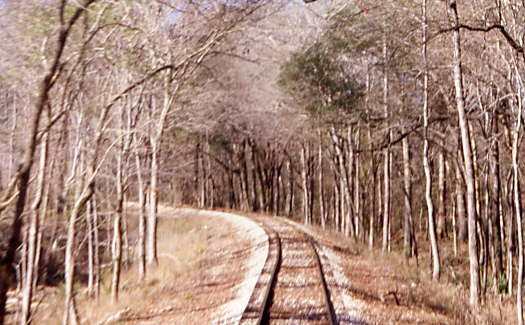
Rounding another curve.
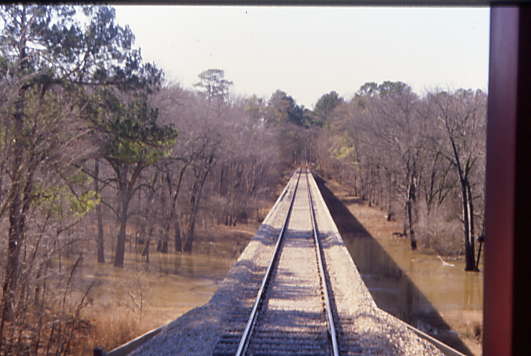
Crossing the Neches River bridge, which is 1,100 feet long and 38 feet high.
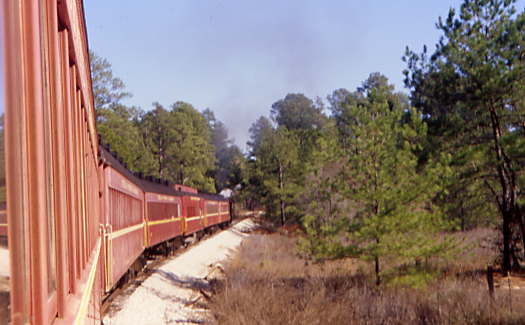
Texas State Railroad 2-8-0 300 took our train rounding another curve.
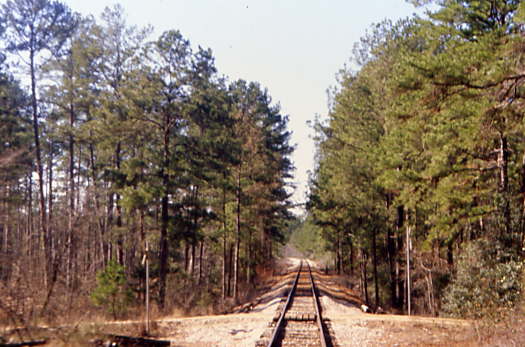
Passing over a grade crossing.
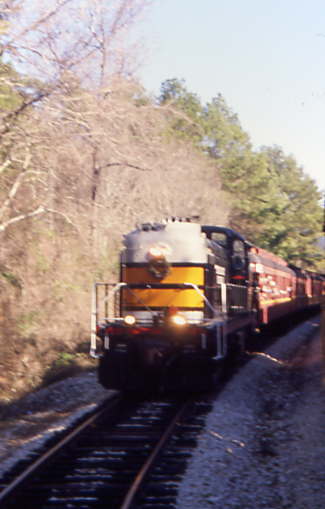

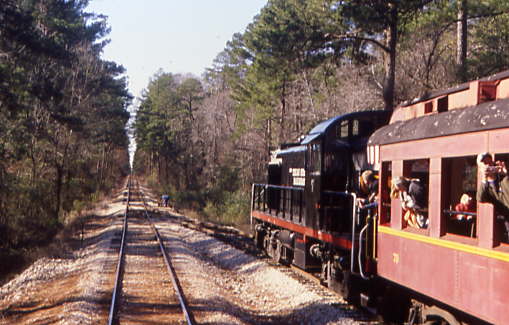
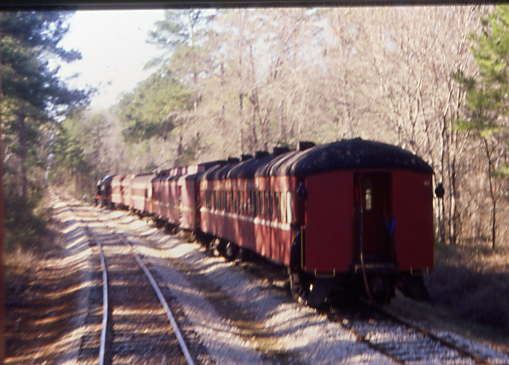
Next we passed the diesel train from Rusk to Palestine at Mewshaw siding.
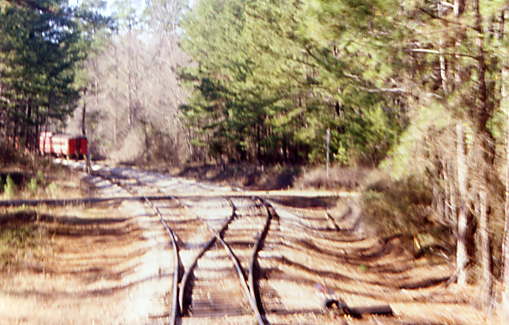
The east switch at Mewshaw.
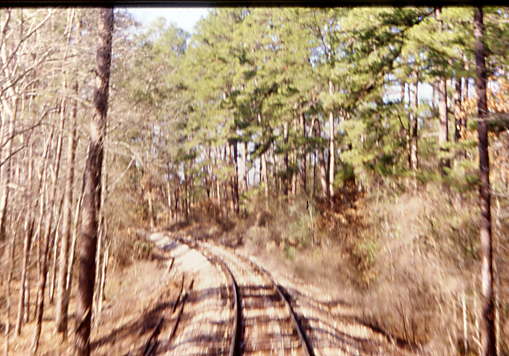
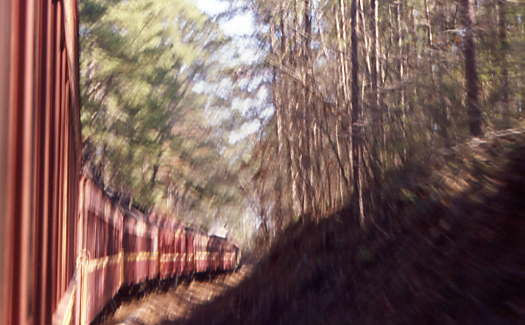
Rounding a curve.

The train ran through Java, Texas.
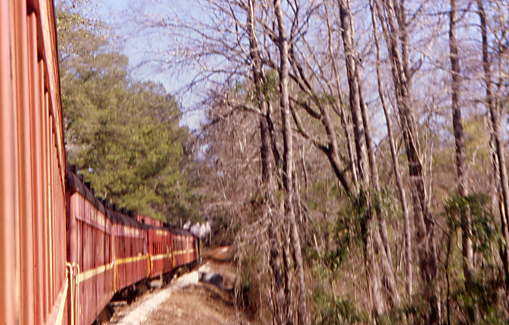
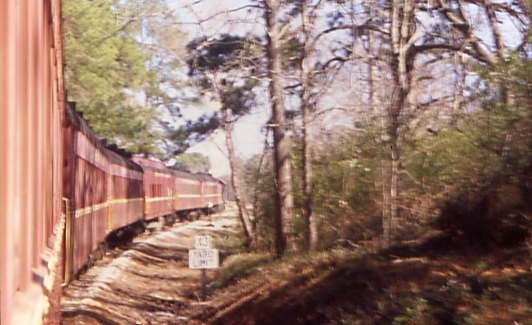
Views ahead and the yard limit sign for Maydelle.

The buildings along the highway in Maydelle could now be seen.
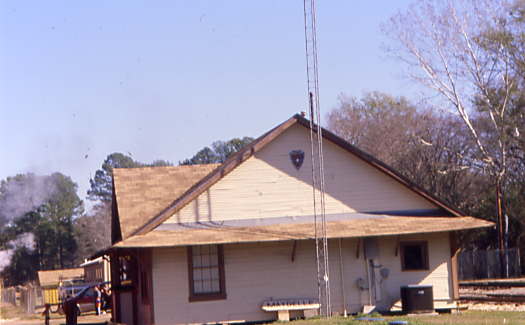
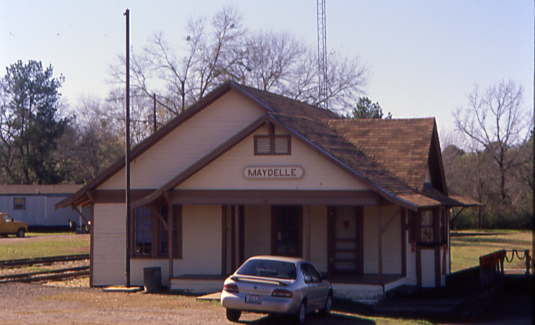
The Maydelle station, originally a house and converted to movie prop, now used by the railroad.
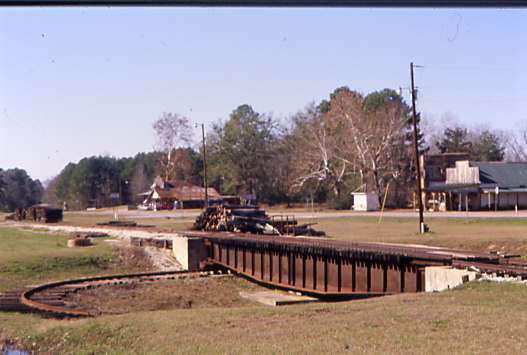
The turntable at Maydelle.
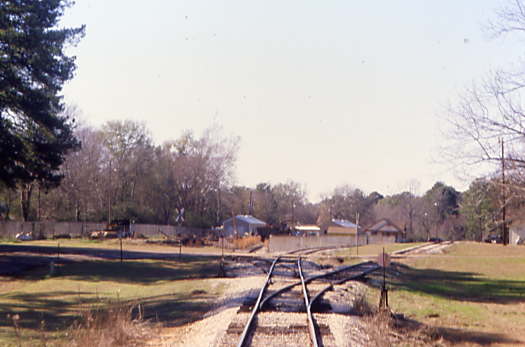
The east switch here.
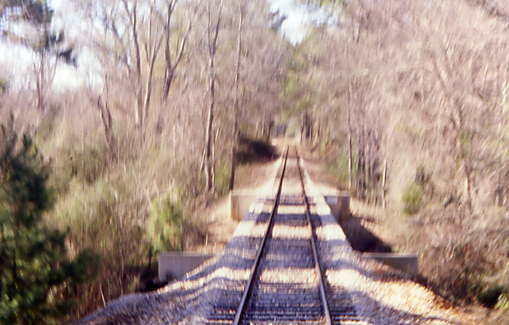
More straight track on this unique railroad.
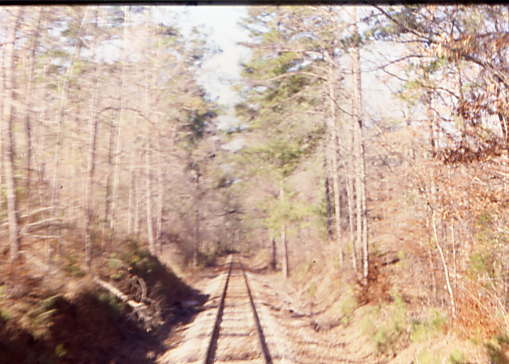
Now our train was getting ready to drop down the 2.4 percent grade toward Rusk.

Crossing the Beans Creek bridge.
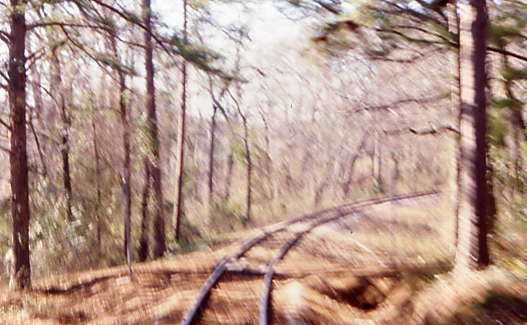
Rounding another curve.

As we approached Rusk, we passed the Milepost 1 sign.
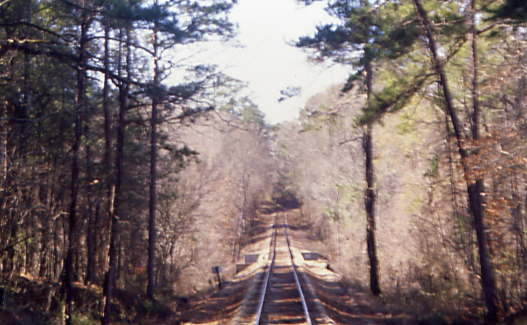
The train rolled down that final mile into Rusk.
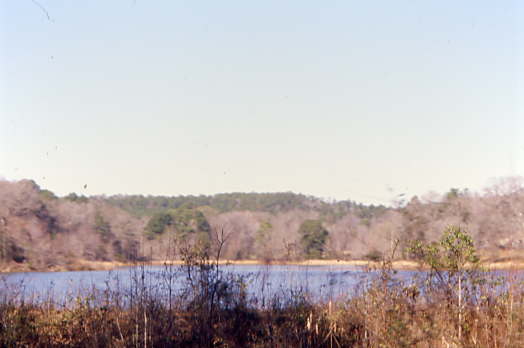
Crossing an arm of Cherokee Lake.
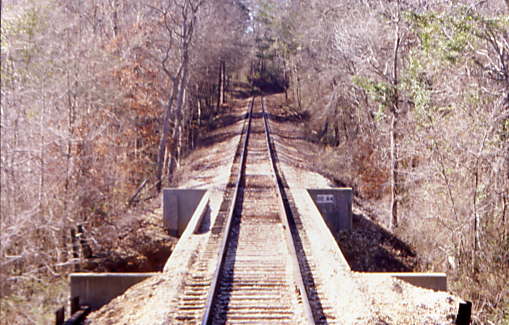
Traversing a short bridge before we arrived at Rusk, where it was announced that because of a washout, the train would be unloaded and pulled away from the station because the passing track was out of service.

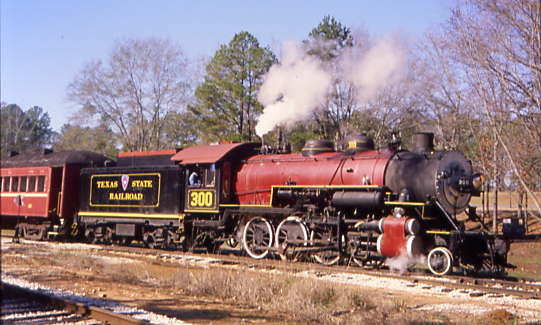
The train at rest at Rusk.
The Rusk station after we had arrived.
The station sign at the east end of our route.
The front of the station.
The water tower.
A washout from that wild Friday night weather we all lived through.
A lot of water had washed copious amounts of dirt from underneath the tracks.
A close up of something you do not see every day.
It was just the ties that kept the track together as they hung in the air.